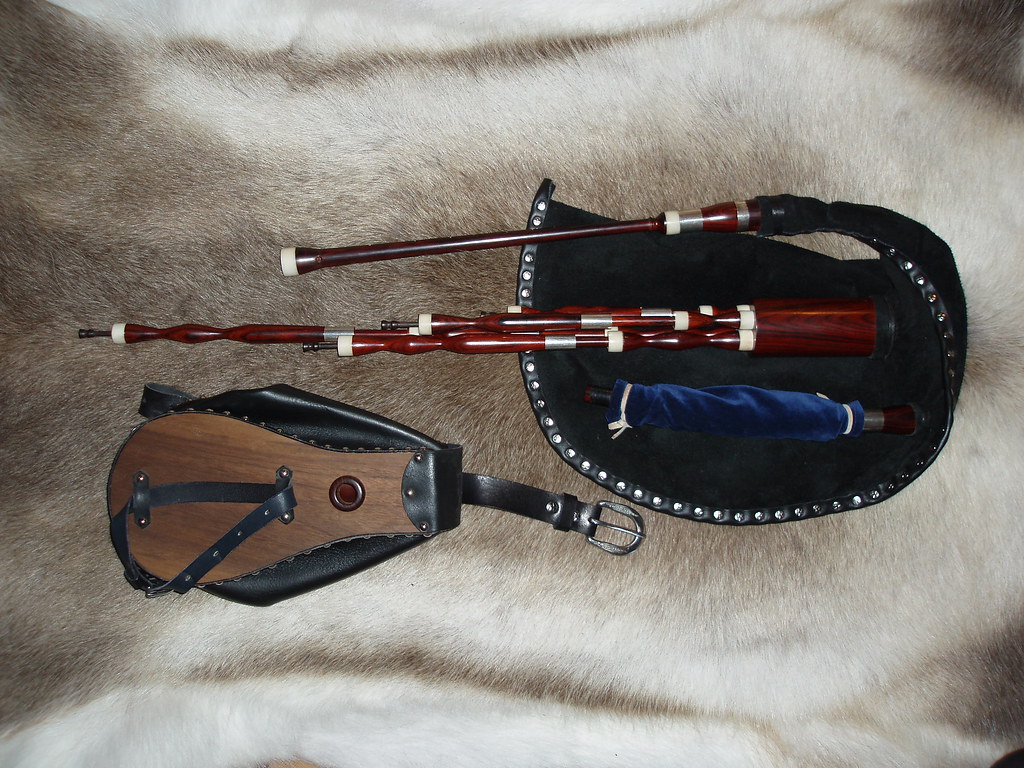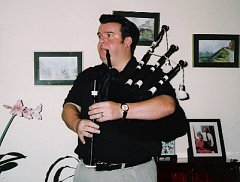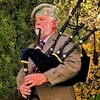|
-
25th June 14, 03:34 PM
#21
I saw that. I was just goint to use the top of my current chanter but in retrospect I was very glad that I was outbid. I jumped the gun and almost wasted money! My chanter top might not have fit.
So...if I see those holes again I shouldn't freak about it.
Is this feature a mark of a good chanter?
I've noticed that the counter-sunk holes tend to be seen on nicer chanters.
Maybe one or some of our experienced pipers can start a sticky thread titled "Your Practise Chanter and You"?

The Official [BREN]
-
-
25th June 14, 09:37 PM
#22
No you don't need to freak out and in fact, the majority of practice chanters don't even have them.
As for counter sunk holes, some do and some don't....it's just a personal preference thing.
To some they make it feel more like you are playing a pipe chanter, as the holes on a pipe chanter are significantly bigger than those on a practice chanter......but I've not found the to be of any real benefit. To me they just feel like......counter sunk holes!!
It's not necessarily a matter of quality.
I have a 1921 hallmarked, silver mounted practice chanter which has been in the family for at least 60 if not 70 years and it originally had counter sunk holes. The bottom part has since been disposed off and replaced with a regular bottom part. Purely a matter of my own personal preference.
One other thing that I'll mention is that I used to have a delrin/poly practice for my son and the thing I did not like about it was that the edge/rim of the holes were fairly sharp.
Certainly not finger cutting sharp (!!) but sharper than any wooden chanter I've played. Maybe it was a one off, I don't know. A bit of mild sanding took care of the issue.
-
-
25th June 14, 11:08 PM
#23
Good to know. Excellent information here, gents.
My current chanter does not have either if the features being discussed (clearly).
On to another question:
If my intention is to eventually learn the smallpipes, too, am I correct in assuming that the fingering is pretty much the same? I am aware that some pipes, like the Uillean pipes, use different fingerings (I looked at a uillean pipes fingering chart and compared it to the GHB fingering chart...world of difference and another octave).
Lastly, I see that GHB have a couple of notes that can be fingered a couple of ways depending on whether it's a traditional piobaireachd or not. Wow!
Last edited by TheOfficialBren; 25th June 14 at 11:09 PM.
The Official [BREN]
-
-
25th June 14, 11:52 PM
#24
http://www.tartanthistle.com/Practic...ndard_Kit.html
Ditch that PC and get a real one. My PC came from Tartan Thistle and this link takes you to the whole she-bang. It's $117 for everything you see. I love the standard length Gibson PC and I much prefer the recessed holes. It just feels more like the pipe chanter and the Gibson also has finger spacing that's closer to the pipe chanter than some PC's.
You won't need pipes for at least 6 months of lessons, minimum. I got on the practice goose after 6 months and loaner pipes a couple months after that.
Make time in your day for a half hour of practice and stick with it. The pipes are fun.
As for different notes you mentioned, you probably mean the throw on D, there are two styles, the light and the heavy. I was taught the heavy throw. Just get good instruction and practice!
Last edited by 416 Rigby; 25th June 14 at 11:55 PM.
-
The Following User Says 'Aye' to 416 Rigby For This Useful Post:
-
26th June 14, 01:24 AM
#25
If it's Scottish smallpipes you are thinking about, then yes, the fingering is identical to a GHB, and in fact the chanter on modern SSP is almost identical to a practise chanter in design, so the hole spacing and size is almost identical too. Although you can play GHB tunes on SSP in the GHB style, traditionally smallpipes had their own repertiore and the tunes were played with fewer embellishments. Here's a couple of links that may interest you-
http://www.bagpipesociety.org.uk/the...ook-the-world/
http://lbps.net/lbps/index.php
As for buying a set (when the time comes) it's worth keeping an eye on the LBPS website as they have a 'for sale' section. As for what set to buy, Hamish Moore is generally considered to be the best maker, but he is no longer making production sets, only special orders. Ian Kinnear makes a nice set http://www.scottishsmallpipes.com/ but my vote for best value goes to E.J. Jones, who is in Texas. His pipes are beautifully made and the bores & internal dimensions are copied from Hamish Moore.
http://piperjones.com/instrument-making/
Here's my set-
 Smallpipes by Richard the Rogue, on Flickr Smallpipes by Richard the Rogue, on Flickr
PS the 'tone holes' or 'sound holes' are actually there to set the pitch of low G. Shorter chanters simply use the length of the end of the chanter to set low G. I've seen one very famous piper play the 'tone holes' with his knees to produce a low F as a trick!
Last edited by Calgacus; 26th June 14 at 01:28 AM.
Reason: Added info
-
The Following User Says 'Aye' to Calgacus For This Useful Post:
-
26th June 14, 10:20 AM
#26
As for different notes you mentioned, you probably mean the throw on D, there are two styles, the light and the heavy. I was taught the heavy throw. Just get good instruction and practice!
It's quite true that there are light and heavy versions of the D throw (I personally prefer the heavy), but TheOfficialBren is probably referring to the alternate fingerings used for the pibroch high A and high G, which have the effect of slightly flattening the notes.
The tone holes found on some practice chanters are found only on the long versions. They are necessary because the only real difference between a long PC and a regular one is the extra 3.5" or so of length below the low A hole. Without the tone holes, the low G on a long chanter would not sound properly. The tone holes are not required on a regular length chanter because the length of the chanter itself determines the pitch of the low G.
One simple trick for easing the sharpness of the edges of the holes on a polypenco chanter is to use very fine steel wool and rub until the holes feel comfortable. I don't play a poly PC, but I do this with my poly pipe chanters and they feel as comfortable as my blackwood ones. The very fine steel wool doesn't leave any scratches on the polypenco.
-
The Following User Says 'Aye' to imrichmond For This Useful Post:
-
26th June 14, 04:45 PM
#27
Is it definitely Scottish Small Pipes that you want to play?
Just a thought, but what about a set of 'miniature highland bagpipes' sometimes referred to as kitchen pipes, fireside pipes or chamber pipes?
I have a set that were made by Blue McMurchie a few years back.
The ones I had made wet blown, same fingering as GHB, chanter in Bb, have one bass, one tenor and one alto drone. Reeds are not hard to find.....although not necessary as I'm still using the original set!
 Great fun to play. Great fun to play.
Last edited by Ron Abbott; 26th June 14 at 04:49 PM.
-
The Following User Says 'Aye' to Ron Abbott For This Useful Post:
-
29th June 14, 05:37 AM
#28
I should point out that the two extra holes appearing at the bottom of Scottish pipe chanters are also found on a wide variety of woodwinds, both folk and orchestral, both modern and Renaissance.
The general name for these, in normal music circles, is "vent holes".
The term "tone holes" refers to all the holes on an instrument, both the ones which are fingered and the vent holes.
Spanish chanters have three vent holes: the same two as the Highland chanter, and a third one on the back.
Modern "Irish flutes" usually have two vent holes, but in line, on the footjoint.
Bulgarian Kavals have four vent holes, two across like the Highland chanter plus two like modern "Irish flutes".
The reason for the vent holes is that woodwind instrument makers found out long ago (possibly in the Middle Ages) that chanters and flutes sounded better with an extra length to the sounding tube.
Modern silver Boehm flutes are often made with a Low B footjoint, the extra length not only to get that extra low note but also for the improvement on certain very high notes.
About the 'long' practice chanters, yes they're the 'in' thing right now. Who is usually credited with inventing these is pipemaker George Alexander (Isle of Wight, and London). He also started making practice chanters out of plastic, and was a pioneer with plastic practice chanter reeds.
About the very high backpressure/impedance on traditional PCs (due to the extremely narrow bore) I believe that this was intentional, so that the tyro would build up lip strength whilst learning the fingering. The narrow bore and high impedance give traditional PCs their stuffy kazoolike tone.
Gibson long PCs are different, and have a bore and reed more like those of Northumbrian Smallpipes, and have a lower backpressure (that is, are more freeblowing) and have a more open, musical tone.
I just yesterday got a new long McCallum PC in red poly! I love the whimsical colours McCallum is making these in nowadays. This PC is light, feels very comfortable in the hands, and with a Walsh reed gives a pretty good scale.
(Traditionally PCs had their holes drilled more to get the beginner used to keeping his fingers more or less evenly spaced, than to give an in-tune scale. They tended to have the C# and F# a bit flat and High G rather sharp.)
Last edited by OC Richard; 29th June 14 at 05:42 AM.
Proud Mountaineer from the Highlands of West Virginia; son of the Revolution and Civil War; first Europeans on the Guyandotte
-
The Following User Says 'Aye' to OC Richard For This Useful Post:
-
29th June 14, 05:54 AM
#29
I remember the first time I saw a long practice chanter must have been circa early 1980s, maybe '81 or '82.
And yes, it was Alexander although the idea was soon copied.
The one I had was a Grainger (as far as I can recall).
I hated it.....nothing wrong with the sound, it was just a pain to sit and practice with.
I couldn't get the sole up on the table and it was just too unwieldy and long. However I had friends back then who swore by them.
I used to also have a 'slightly longer than standard' size practice chanter. The top was the same as a normal practice chanter but the bottom had counter sunk holes and was a just a tad longer (with the holes spaced slightly than apart) than was normal.
Here's one of my practice chanters.
The silver is hallmarked for 1921.
I don't know why it looks so brown in the photo as it's actually quite dark African Blackwood!
-
The Following User Says 'Aye' to Ron Abbott For This Useful Post:
-
29th June 14, 05:54 AM
#30
Here's the new brightly coloured McCallum PCs in various lengths. I bought one yesterday (red, long) and I love it.

Not everyone's cup of tea. I also have a nice ivory mounted PC from the 1950s but it, like most traditional PCs, pitches around Concert B Flat (where the pipes themselves were pitched in the mid-20th century). In the band I have to use a modern 'long' or 'fullsize' PC because everybody else is, and these all are pitching rather lower, around 450 cycles (Concert B Flat is 466 cycles).
As PCs have been moving down in pitch, the pipe chanters have been moving up, from around 466 in the 1960s to around 482 today.
About long PCs being problematic, I find the opposite. For one thing, the fact that they have vent holes means that the bottom can be rested on a leg. About not being able to play while sitting at a table, yes, if the chair is low and/or the table is high and/or the piper is short. I have no trouble, given a table and chair of ordinary height.
BTW here is what two ordinary Gibson long PCs, with Gibson plastic reeds, sound like
http://www.youtube.com/watch?v=m4lw8-3Jf9w
Last edited by OC Richard; 29th June 14 at 06:00 AM.
Proud Mountaineer from the Highlands of West Virginia; son of the Revolution and Civil War; first Europeans on the Guyandotte
-
Tags for this Thread
 Posting Permissions
Posting Permissions
- You may not post new threads
- You may not post replies
- You may not post attachments
- You may not edit your posts
-
Forum Rules
|
|





















Bookmarks